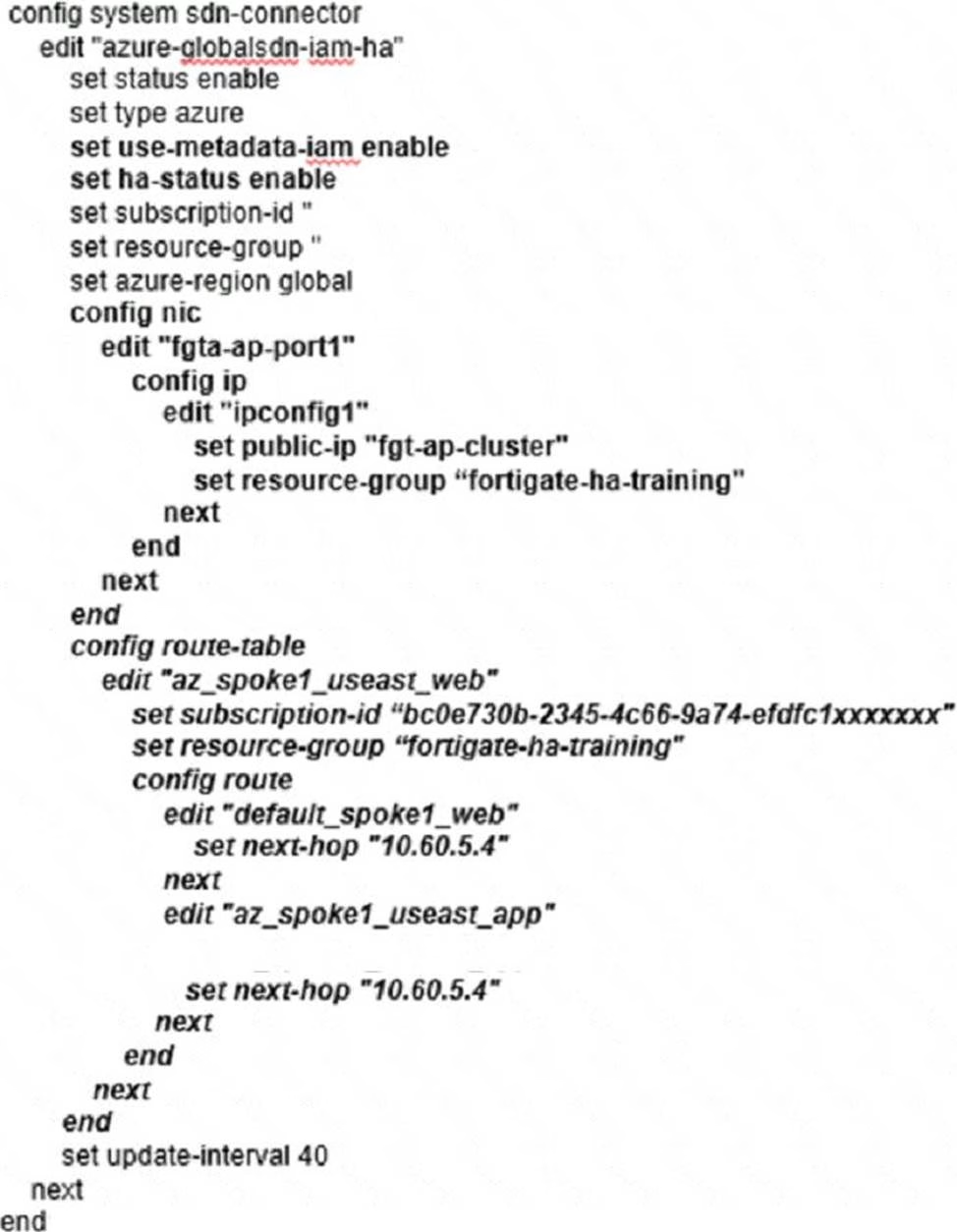Which two statements regarding this particular deployment are true?
Refer to the exhibit

You deployed an HA active-passive FortiGate VM in Microsoft Azure.
Which two statements regarding this particular deployment are true? (Choose two.)
A . During the failover, the passive FortiGate issues API calls to Azure
B . Use the vdom-excepticn command to synchronize the configuration.
C . There is no SLA for API calls from Microsoft Azure.
D . By default, the configuration does not synchromze between the primary and secondary devices.
Answer: AD
Explanation:
A is correct because in this deployment, the passive FortiGate issues API calls to Azure to update the routing table and the public IP address of the active FortiGate123. This way, the traffic is redirected to the new active FortiGate after a failover.
B is incorrect because the vdom-exception command is used to exclude specific VDOMs from being synchronized in an HA cluster. This command is not related to this deployment scenario.
C is incorrect because Microsoft Azure does provide an SLA for API calls. According to the Azure Service Level Agreements, the API Management service has a monthly uptime percentage of at least 99.9% for the standard tier and higher.
D is correct because by default, the configuration is not synchronized between the primary and secondary devices in this deployment. The administrator needs to manually enable configuration synchronization on both devices123. Alternatively, the administrator can use FortiManager to manage and synchronize the configuration of both devices4.
Latest NSE7_PBC-7.2 Dumps Valid Version with 37 Q&As
Latest And Valid Q&A | Instant Download | Once Fail, Full Refund

